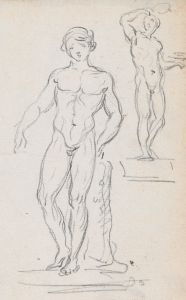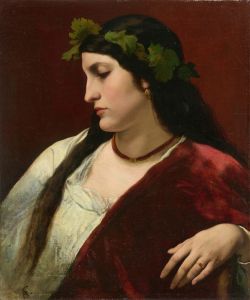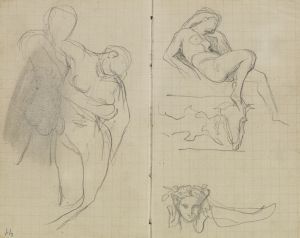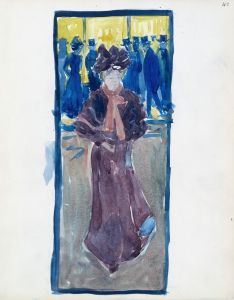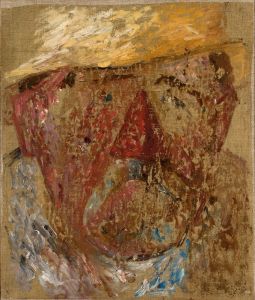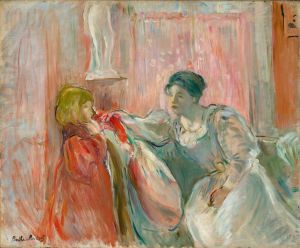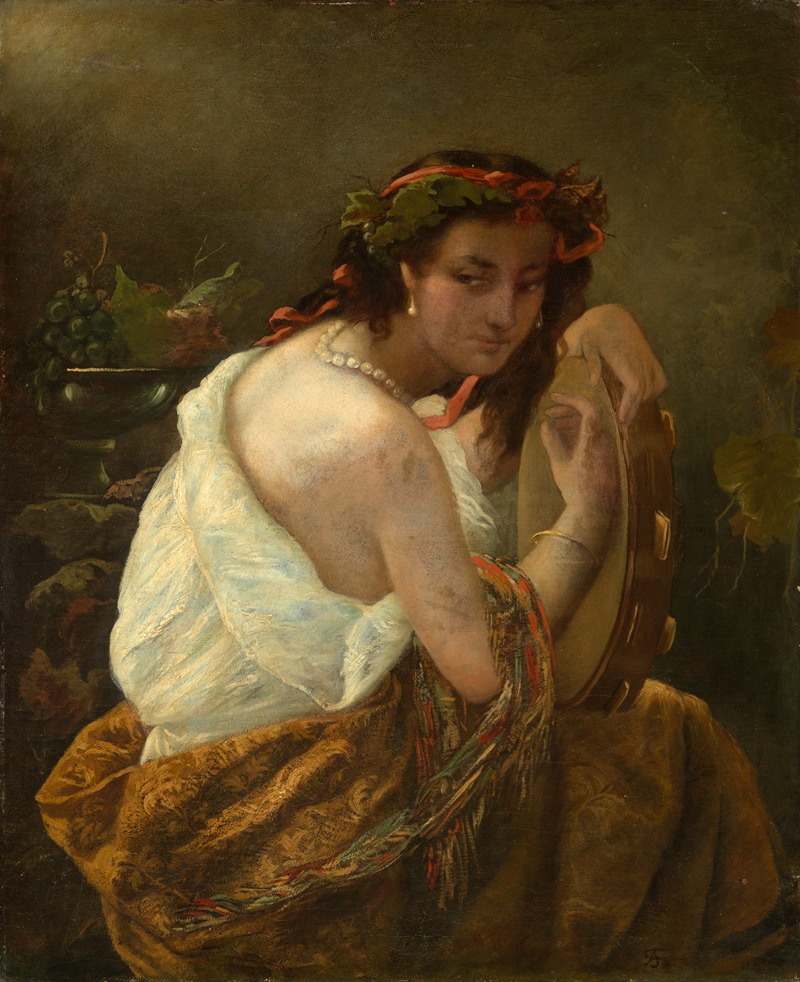
Gypsy with tambourine
A hand-painted replica of Anselm Feuerbach’s masterpiece Gypsy with tambourine, meticulously crafted by professional artists to capture the true essence of the original. Each piece is created with museum-quality canvas and rare mineral pigments, carefully painted by experienced artists with delicate brushstrokes and rich, layered colors to perfectly recreate the texture of the original artwork. Unlike machine-printed reproductions, this hand-painted version brings the painting to life, infused with the artist’s emotions and skill in every stroke. Whether for personal collection or home decoration, it instantly elevates the artistic atmosphere of any space.
"Gypsy with Tambourine" is a painting by the German artist Anselm Feuerbach, created in 1852. Feuerbach, a prominent figure in the 19th-century German art scene, was known for his classical style and his focus on historical and mythological subjects. This particular work is an example of his interest in depicting romanticized and exotic themes, which were popular during the period.
The painting portrays a young Romani woman, often referred to as a "gypsy," holding a tambourine. She is depicted in a traditional costume, which includes a colorful dress and a headscarf. The use of vibrant colors and the detailed rendering of her attire highlight Feuerbach's skill in capturing the textures and patterns of the fabric. The tambourine, a musical instrument associated with dance and festivity, adds to the lively and dynamic quality of the composition.
Feuerbach's "Gypsy with Tambourine" reflects the 19th-century European fascination with the Romani people, who were often romanticized and depicted as free-spirited and mysterious. This fascination was part of a broader trend in European art and literature, where artists and writers sought to explore and depict cultures that were perceived as exotic and different from their own.
The painting is also notable for its composition and use of light. Feuerbach employs a strong contrast between the dark background and the illuminated figure of the woman, drawing the viewer's attention to her expressive face and the intricate details of her costume. The play of light and shadow enhances the three-dimensionality of the figure, giving her a sense of presence and immediacy.
Anselm Feuerbach was influenced by his studies in Italy, where he was exposed to the works of the Renaissance masters. This influence is evident in his meticulous approach to composition and his emphasis on classical beauty and harmony. "Gypsy with Tambourine" demonstrates his ability to blend these classical elements with the romantic and exotic themes that captivated the European imagination during his time.
The painting is part of the collection of the Staatliche Kunsthalle Karlsruhe in Germany, where it is displayed alongside other works by Feuerbach and his contemporaries. The Kunsthalle is known for its extensive collection of German art from the 19th century, and Feuerbach's works are considered an important part of this collection.
In summary, "Gypsy with Tambourine" by Anselm Feuerbach is a significant example of 19th-century German painting, reflecting the artist's classical training and his interest in romantic and exotic subjects. The painting's vibrant colors, detailed rendering, and dynamic composition make it a notable work in Feuerbach's oeuvre and an important piece in the collection of the Staatliche Kunsthalle Karlsruhe.





